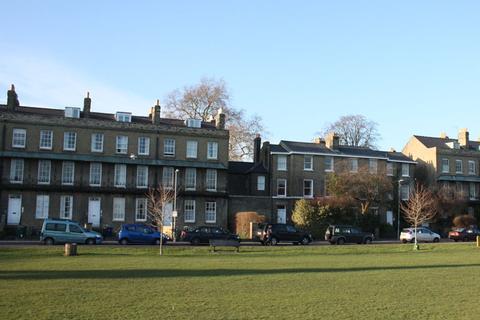Chris Hunter – Programmable Plastics
Self-organisation is an intrinsic property of matter. Take any collection of molecules, and under the right conditions they will form an ordered arrangement.

For example, if you take 1020 water molecules at 20°C and atmospheric pressure they will spontaneously form a liquid droplet. A cell is an assembly of a much more complex mixture of molecules, but every molecule has encoded in its chemical structure the information that tells where it should be in the cell and with which other molecules it should interact. The aim of my research is to understand and exploit the forces that govern these intermolecular interactions.
One of the challenges is that these interactions are very weak when isolated. For example, chloroform and ether are both volatile substances, because the molecules interact very weakly with their surroundings. However, a chloroform molecule can interact with an ether molecule through a very weak but specific interaction called a CH-O hydrogen bond. As a consequence, if a litre of chloroform is mixed with a litre of ether the mixture becomes very hot and the total volume shrinks by 5 to 10 per cent. Although the chloroform and ether molecules interact weakly, there are many interactions in two litres of the mixture and so the effects are readily observable.
Multiple interactions that act cooperatively to produce a measurable outcome are the focus of research in my laboratory. We use synthetic molecules designed to organise themselves into stable complexes to probe the fine details of the relationship between intermolecular forces and chemical structure.
For molecules that interact at multiple points of contact and are embedded in a complex network of interactions with the surrounding solvent molecules, disentangling a specific contribution from the properties of the whole group is not straightforward. The complexity is problematic, because we know theoretically that there are many factors that affect intermolecular interactions, and it is difficult to establish which ones really matter and which are intellectual curiosities.
We have developed experiments that make it possible to dissect the energetic contribution of a single intermolecular contact from a network of interconnected interactions. By using robotic spectrometers, we automate these experiments to survey large numbers of closely related synthetic complexes. These measurements provide hard experimental data from which we can draw general conclusions about the relative significance of the different factors that govern intermolecular interactions. We can thus draw up quantitative models that can be used to design and predict the behaviour of new molecules based on their chemical structure.
In nature, biological molecules coordinate large numbers of very weak interactions to achieve remarkable feats. In chemistry, we are now beginning to map out the rules that will allow us to build new synthetic molecular ensembles of comparable sophistication.
For example, I have just started a major European Research Council project called ‘Programmable Plastics’ aimed at developing a new class of polymer, which has been designed to follow these rules. The idea is to establish methods for the synthesis of polymers that have defined sequences of interaction sites. Cooperative interactions between complementary sites on two different polymer chains will lead to the formation of complexes that resemble the DNA double helix. In DNA, a ladder of intermolecular interactions links two polymer chains, and the ladder then twists to form the double helix. It is the ladder structure that is the key to the special properties of DNA: if a single chain of DNA is provided with monomeric building blocks (A, C, G and T), it can be used as a template to make another chain, which is a complementary copy.
This process is the molecular basis for inheritance and evolution in biology. The new polymers we are making will not only resemble DNA structurally; they will also have similar template properties. In other words, it will be possible to use the sequence of interaction sites on one chain to synthesise a new one that replicates the sequence information in
the template.
The vision is to use these synthetic replicating polymers in directed evolution experiments to find new functional materials. This is really exciting, because the concepts can be applied to many different types of conventional plastics, opening up a huge number of new possibilities for discovering new types of materials with unprecedented properties.


